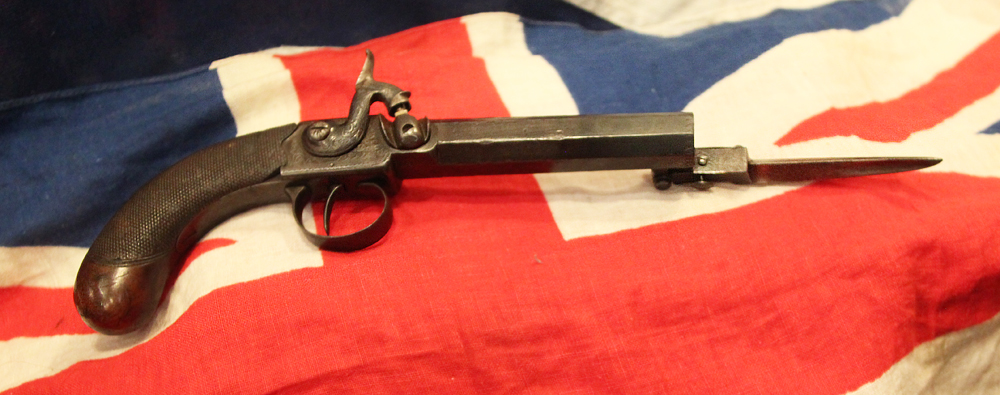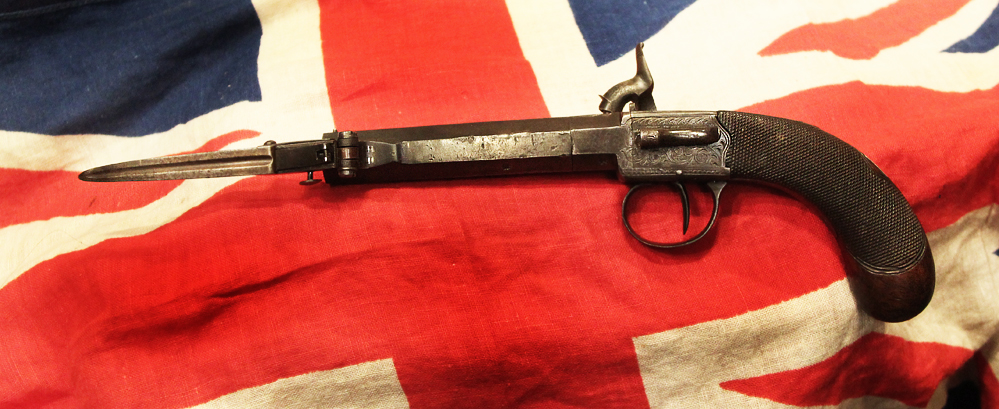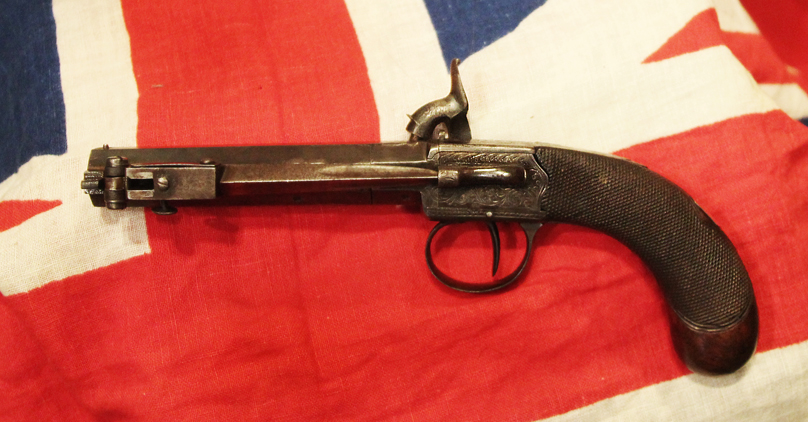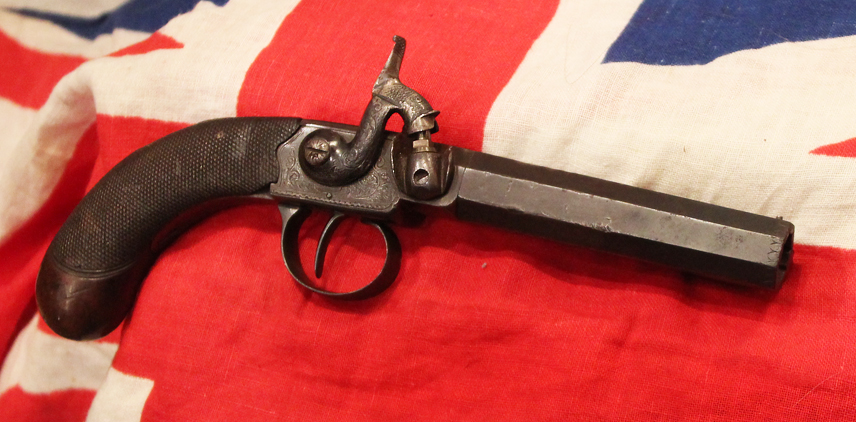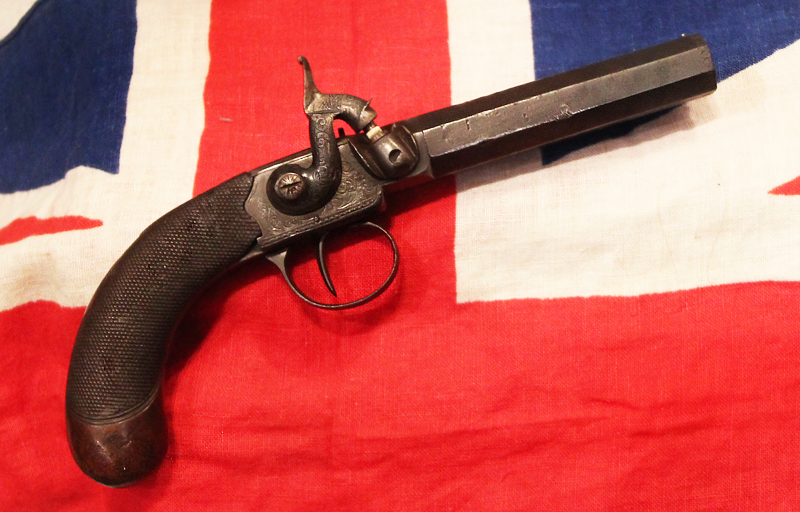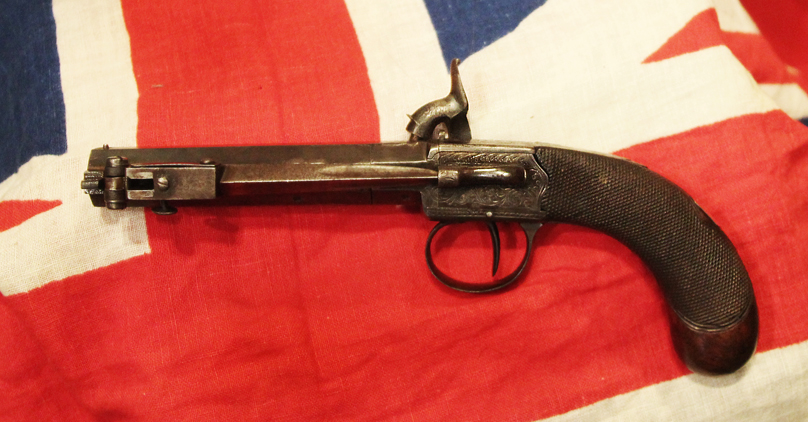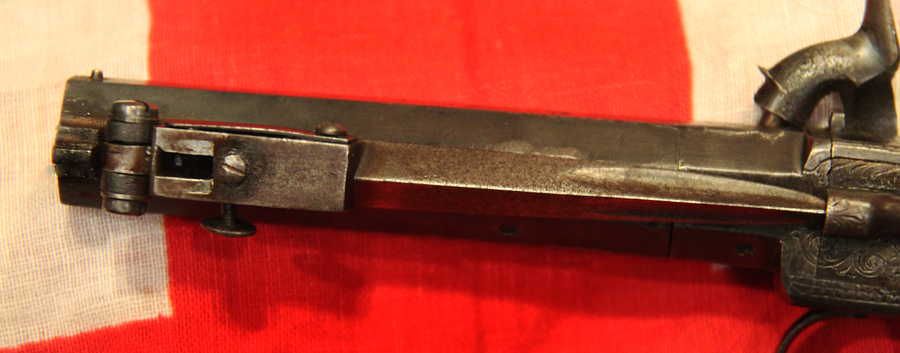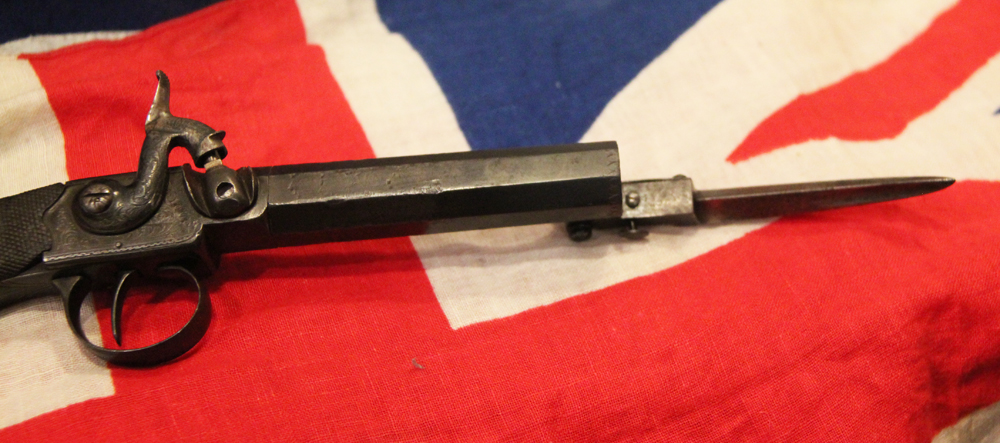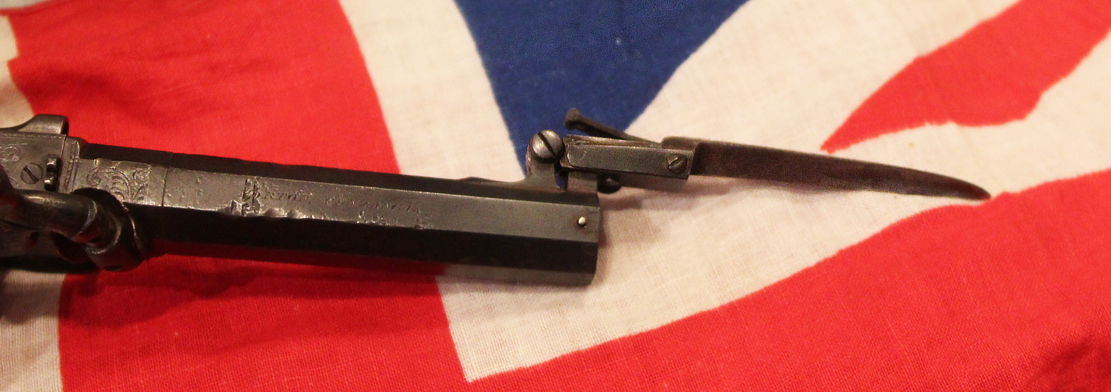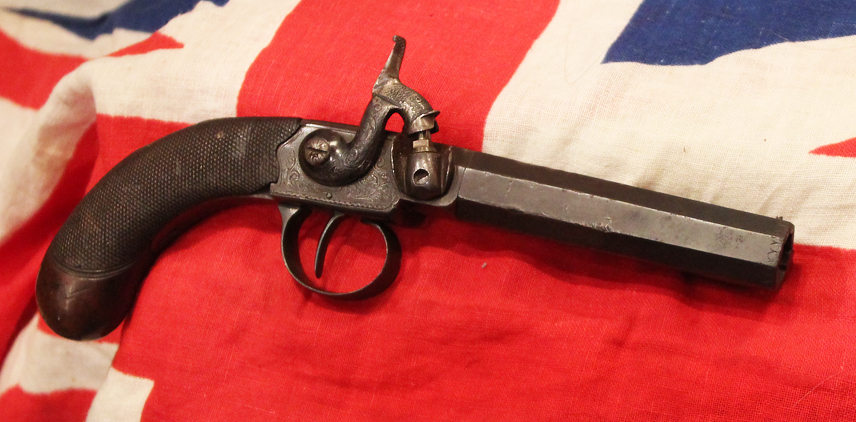A Very Good 19thC. Ship Captain's Spring-Bayonet Side Lock Pistol of Penzance
Steel octagonal barrel and mounts, beautifully engraved with lots of original blue and colour. Cross hatched carved walnut grip, with side mounted folding bayonet, locked into position with a sliding catch. Excellent tight action and a very strong spring to retain the bayonet for its spring loaded action. Maker marked by Norton of Penzance Often referred to as Ships Captain's pistols, as they have been used since the 18th century, and were much favoured by ships captains, as they has a double function both offensive and defensive. With a sword in one hand and this pistol in another the captain would have been holding in both hands a formidable arsenal against enemy boarding parties. A single large bore pistol shot, then eject the bayonet to turn it into a dagger. Maker marked by Norton of Penzance, a well-known centre for British pirates and smugglers over the centuries. Penzance's history stretches back centuries and features all the storybook greats: pirates, smugglers, invaders and adventuring heroes. In just one day, in 1640, three ships raided the town and over 60 residents of Penzance were captured by Corsair pirates and sold into slavery in North Africa. It is estimated anything up to half a million English were captured and sold into slavery by North African Corsair and Barbary pirates during the 17th century and into the 19th century, from, mainly, the South coast.
In Chapel Street you'll find the spot where the news of Lord Nelson's death was first announced, salt-sprayed from the fishing boat it sailed in on. Beneath the modern-day roads, a network of secret tunnels and escape hatches hint at the old days of evading the excise men. During the 18th and 19th centuries, smuggling was rife as the Cornish fought back against hefty taxes. A large network of smuggler's tunnels runs beneath Penzance, spanning out from the harbour to the Abbey Warehouse, the Turks Head and Admiral Benbow pubs on Chapel Street, and to Causewayhead and Market Jew Street. The Admiral Benbow even had its own in-house smuggling ring, known as the Benbow Brandy Men. Also famous were the Carters of Prussia Cove. John Carter, their most notorious member, was widely thought of as west Cornwall?s very own Robin Hood. When his goods were seized and placed in Penzance Customs House, Carter broke in to retrieve them. According to legend, officers immediately knew who was responsible because 'honest' John had only stolen back what was his.
The number of boats sailing in and around Penzance meant important information could sometimes be passed on before it reached the newspapers. In 1805, the town became the first in Britain to hear of Lord Nelson's death and his forces victory at the Battle of Trafalgar. Local fishermen met the HMS Pickle as she sailed to Falmouth with official dispatches, bringing the news in to be announced from the Minstrels Gallery of the Union Hotel on Chapel Street. The pistol was made circa 1830 and the barrel has a few combat impact marks in the mid section. 12.5 inches long overall
Code: 22525

